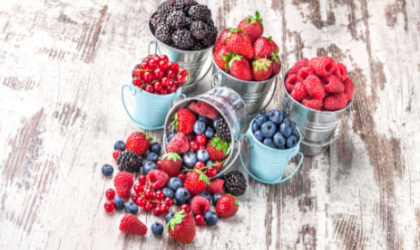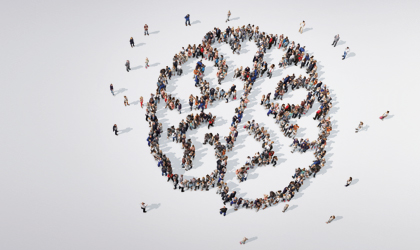
Of course, your complexion isn’t the only thing that evolves with age. Your body also experiences physical changes as you traverse through life. Some are visible – your hands, for instance. And some are hidden, like your bones. Taking care of your body as you age means you’ll feel as vital on the inside as you look on the outside.
Think beyond your complexion
When it comes to skincare, many people don’t think beyond their face (admittedly, it can feel like a bit of a faff). But every corner and crevice of your body deserves just as much TLC as you get older.
Hands and nail
Gardening, washing, doing the dishes, cleaning with harsh chemicals – hands and nails go through it all. Not only do hands lose elasticity and fat with age, but they’re also exposed to the elements, which means they often age faster than other areas of the body.
How to take care of your hands and nails:
Our advice: We get it: a hand care regime may sound a bit extravagant. But we promise it’s worth the hype. Applying sun cream to the backs of your hands, wearing washing up gloves, using a rich moisturiser at night and choosing acetone-free polishes will help to keep hands hydrated and healthy as you age.
Breasts
As breasts are made of fatty tissue, they change with age. You cannot affect the way they change over your lifetime. And that’s okay!
Our advice: Always wear a correctly fitted bra, particularly when you’re exercising. Slathering on an antioxidant-rich moisturiser will help to keep your breasts hydrated and healthy, too.
Neck and décolletage
It’s easy to overlook your neck and décolletage when you’re working through your skincare routine. But these areas also need just as much love as your face, especially because they often experience a loss of elasticity.
Our advice: The good news is you don’t need to do anything too differently. Just use all the products you would on your face on your neck and décolletage. Simple, right? Take extra care to massage in an upward motion, so you don’t drag your skin downwards.
Dry brushing and cellulite
Although filtered images on social media will try to convince us otherwise, most women will experience cellulite at some point. And this is perfectly normal; it’s nothing to fear or demonise. If, however, you do want to improve your circulation, dry brushing can help promote detoxification and lymphatic drainage.
Before showering, use a natural body brush to firmly sweep across your entire body with long strokes in an upward motion towards your heart.
Vision care
Diminishing eyesight can be one of the most cumbersome and frustrating aspects of getting older. From your mid-40s, you may find it difficult to focus on close objects (we’re eyeballing you, tiny print on restaurant menus) because the lenses of your eyes weaken and become less flexible. Age-related eye issues can’t always be prevented. But you can certainly live in a way to protect your precious peepers.
Watch the sun damage
It’s not just your skin that experiences sun damage; your eyes are also vulnerable to harmful UV rays. And research suggests prolonged sun exposure can increase the risk of eye problems, like cataracts.1 With that in mind, always protect your eyes on sunny days, especially if you’re on a snow-capped mountain or by the sea. Look for glasses that offer the CE mark, which means they provide 100% UV protection.
Think antioxidants
You may be wondering ‘what do antioxidants do?’ Following a diet rich in antioxidants – especially vitamin A, which contributes to the maintenance of normal vision, and vitamins C and E, which contribute to the protection of cells from oxidative stress – may help look after your eyes. Think darky leafy greens, berries, oranges, and peppers.
Feast your eyes on carotenoids
Lutein and zeaxanthin are powerful carotenoids that are increasingly mentioned in conversations on eye health. These compounds are usually found together in food, like spinach, Swiss chard and kale. Astaxanthin is another fascinating carotenoid to keep an eye on. Wild salmon, trout and prawns are excellent sources of astaxanthin. (Bonus: astaxanthin may be a beneficial compound for skin care).
What are healthy fats?
Abundant in oily fish, the long-chain omega 3 fatty acid, DHA (docosahexaenoic acid), contributes to the maintenance of normal vision.* To support your eyes, we recommend eating two to three portions of oily fish a week.
Banish tired eyes, fast
-
Clock 7-9 hours of sleep every night
-
Moderate your alcohol consumption
-
Avoid cigarette smoke and smoking
-
Make sure you blink enough when doing screen work
-
Use moisturising eye drops if you experience dry eyes
-
Invest in a humidifier to moisten the air at home
Bones
Chances are, you don’t give much thought to your humble bones – and especially how gender comes into the equation. But it’s certainly worth thinking about. Thanks to the hormonal changes associated with menopause, women are more likely to develop osteoporosis – a condition that causes bones to become weaker. The good news, however, is this isn’t always an inevitability. There’s still plenty you can do to look after your bones as you journey through life.
Rethink bad habits
-
Address your alcohol consumption: Chronic, heavy alcohol consumption, especially in adolescence and younger adult years, can harm bone health and increase the risk of osteoporosis. If you drink, try to do so moderately. Try to have no more than 14 units weekly, and enjoy several drink-free days, too.
-
Stop smoking: Evidence continues to links smoking with increased bone fractures.2 If you need help quitting, speak to your GP.
-
Curb your caffeine intake: Caffeine is known to leach calcium from your bones. Where possible, limit your caffeine intake to one or two cups daily.
Let the sunshine in
Since vitamin D3 contributes to the normal absorption and utilisation of calcium – the main mineral found in bones – it’s essential for bones as you age. And the best way to synthesise vitamin D3? Direct sun exposure. Aim to bask for around 15 minutes in the sun each day (oh, and if you’re wondering: it doesn’t matter if it’s cloudy!).
Bone up on bone nutrition
To support bone health the body needs plenty of vitamin D3, calcium, magnesium, and vitamin K2, all of which contribute to the maintenance of normal bones. Sardines are rich sources of vitamin D3 and calcium. You can also find plenty of magnesium in dark leafy greens and vitamin K2 in cheese.
Add some soya isoflavones
Found in tofu, Edamame, and miso, soya isoflavones are increasingly popular with women approaching or going through menopause as they may play a role in bone health.
Want to find out more?
Read more of our resources on ageing and related content here.
References:
-
Linetsky M. et al., UVA light-excited kynurenines oxidize ascorbate and modify lens proteins through the formation of advanced glycation end products: implications for human lens aging and cataract formation. Journal of Biological Chemistry. 2014
-
Hernigou. J., Schuind F., Tobacco and bone fractures: A review of the facts and issues that every orthopaedic surgeon should know. Bone & joint research. 2019;8(6), 255–265.
You Might Also Like

Olivia
Olivia Salter has always been an avid health nut. After graduating from the University of Bristol, she began working for a nutritional consultancy where she discovered her passion for all things wellness-related. There, she executed much of the company’s content marketing strategy and found her niche in health writing, publishing articles in Women’s Health, Mind Body Green, Thrive and Psychologies.
View More



